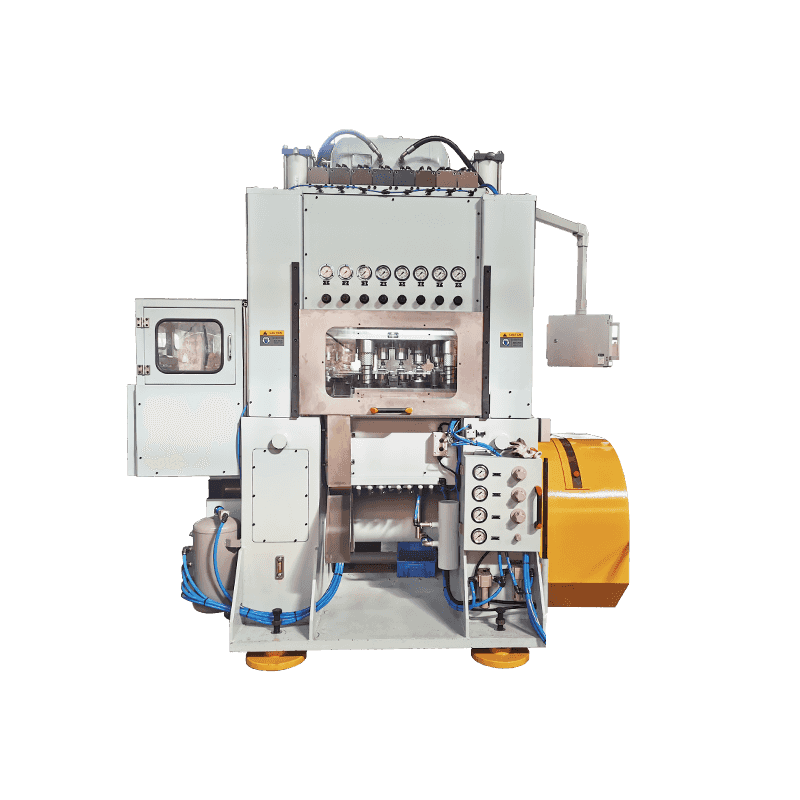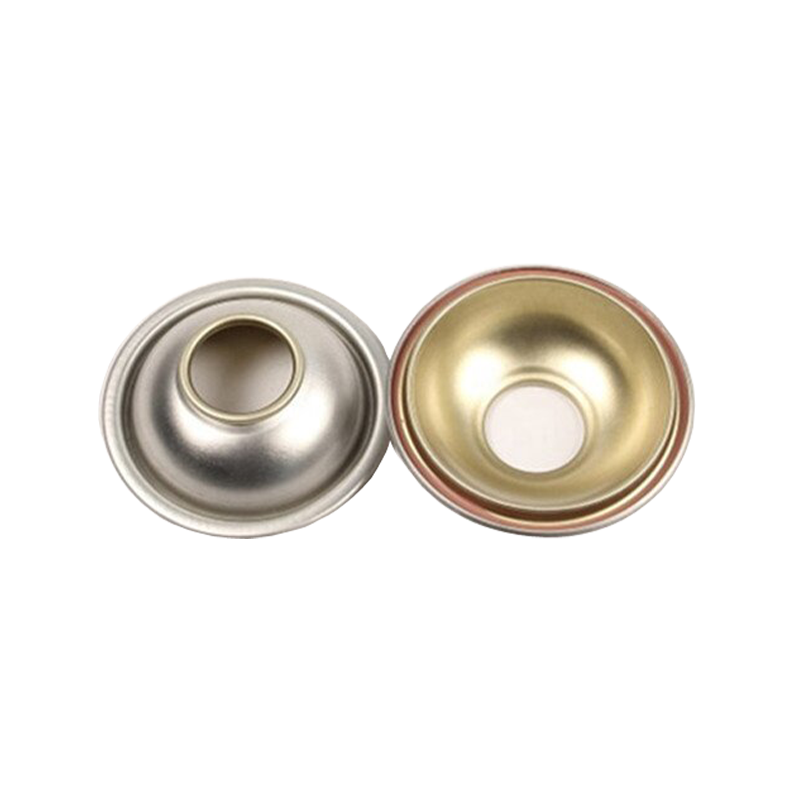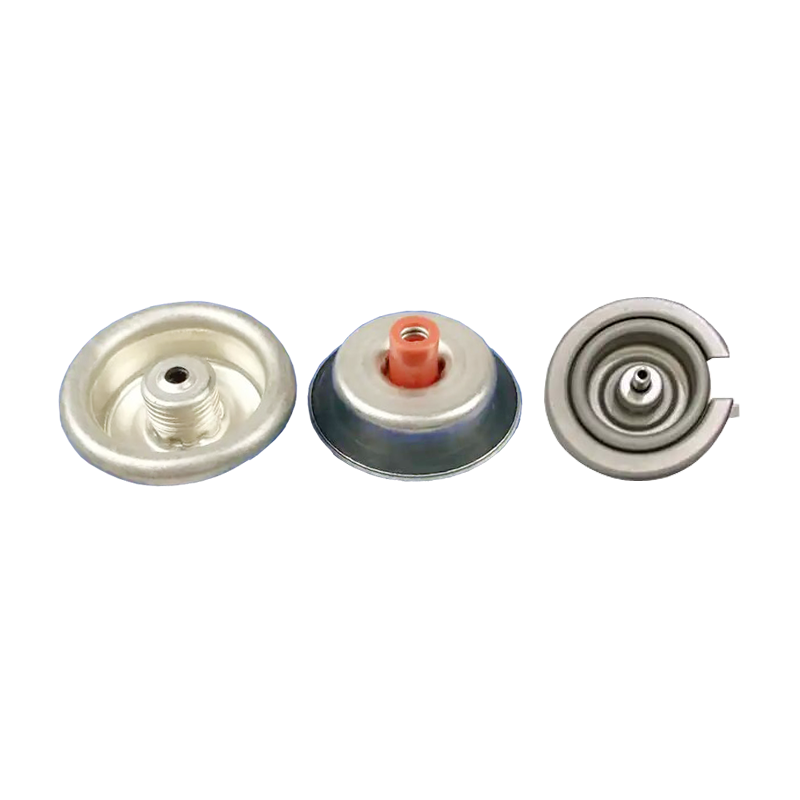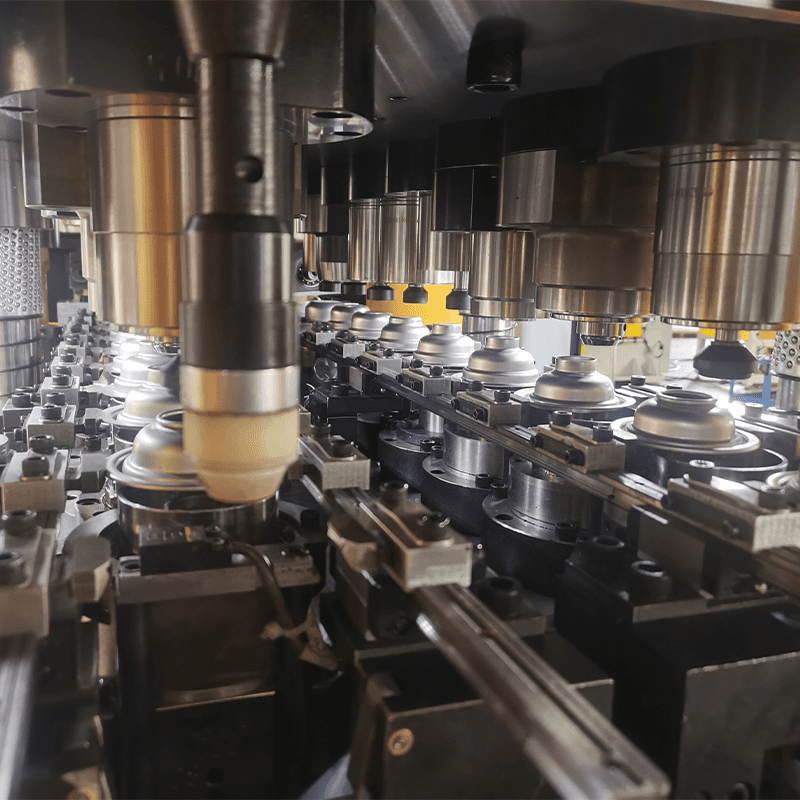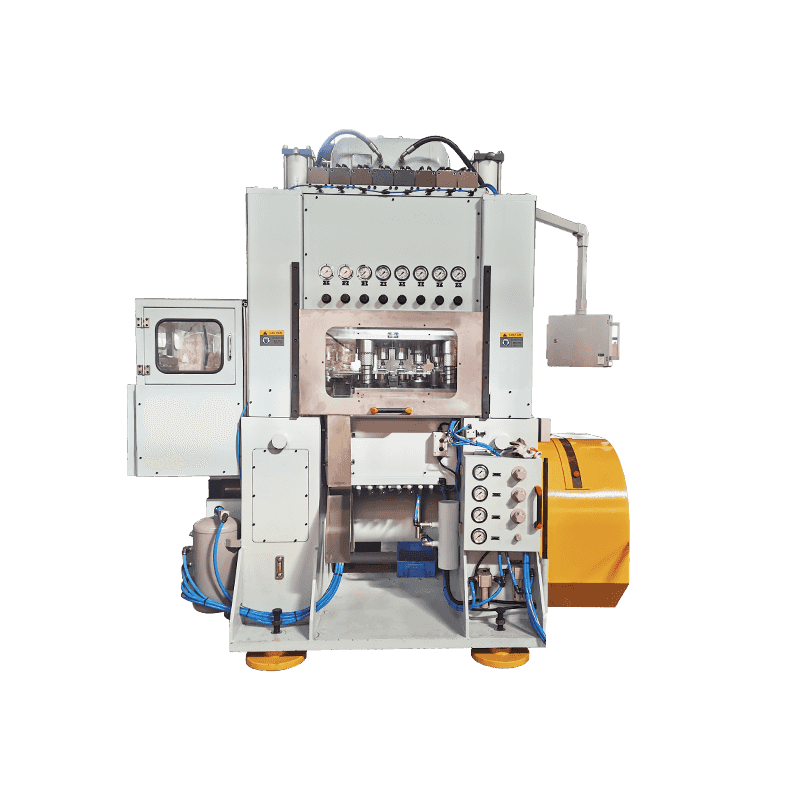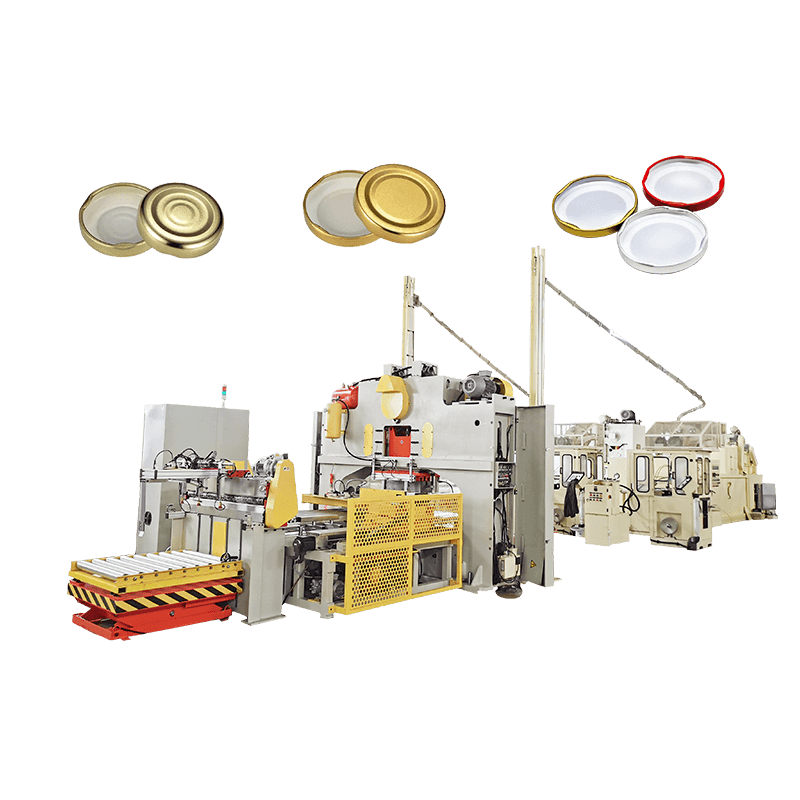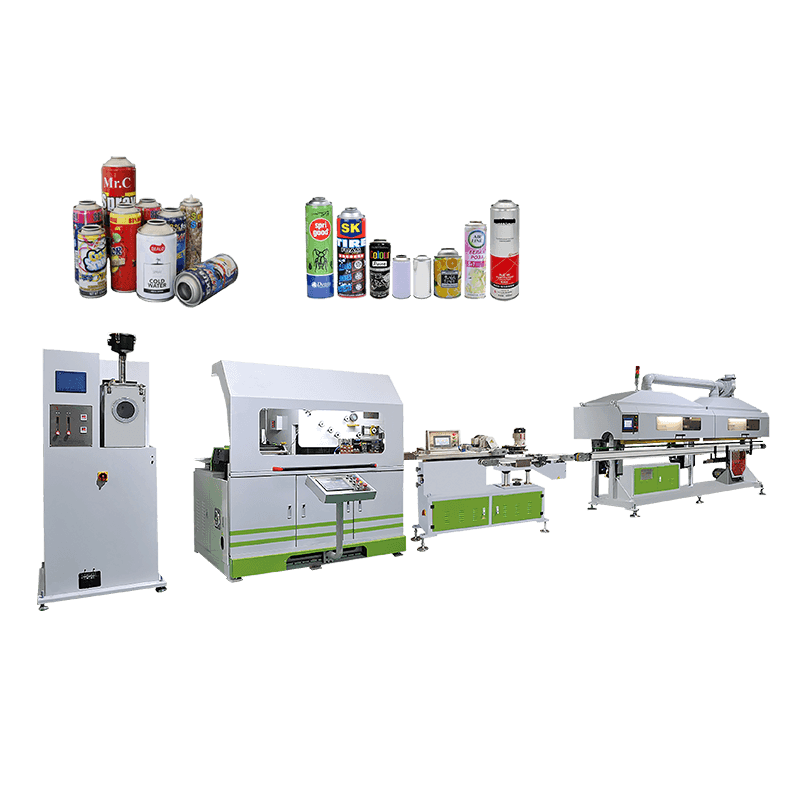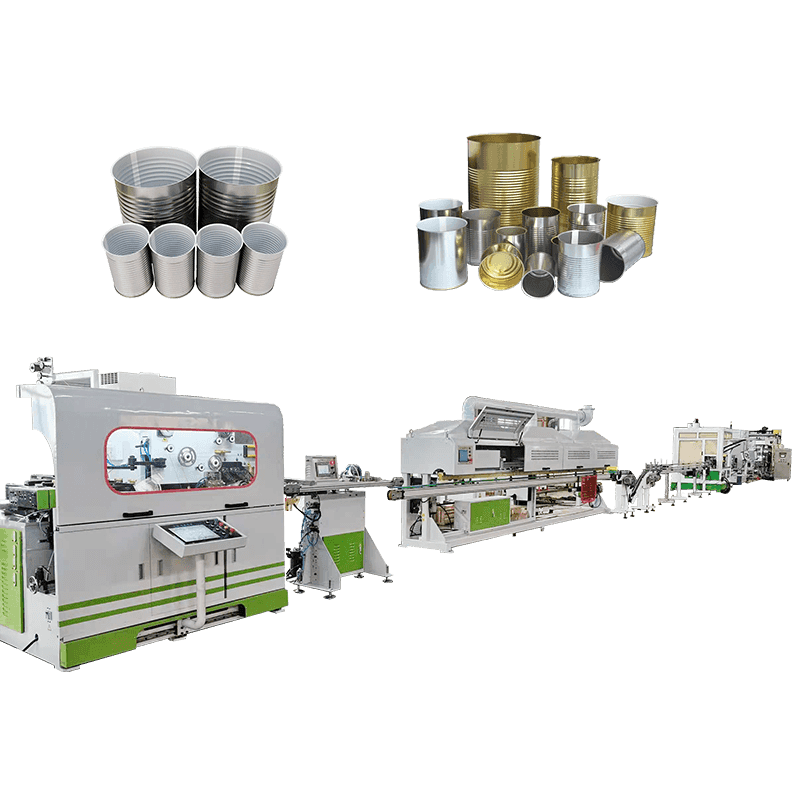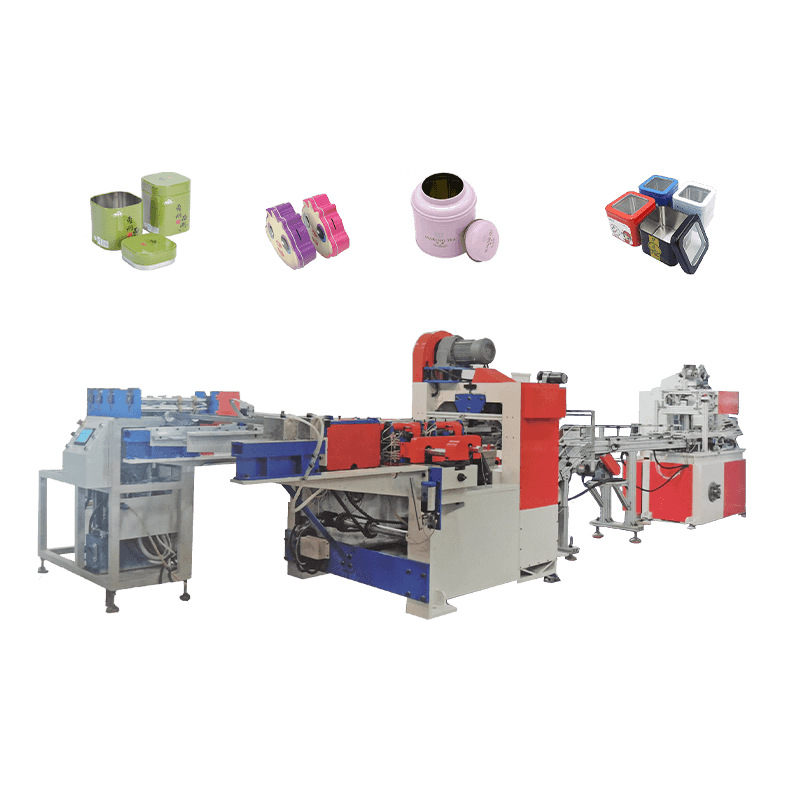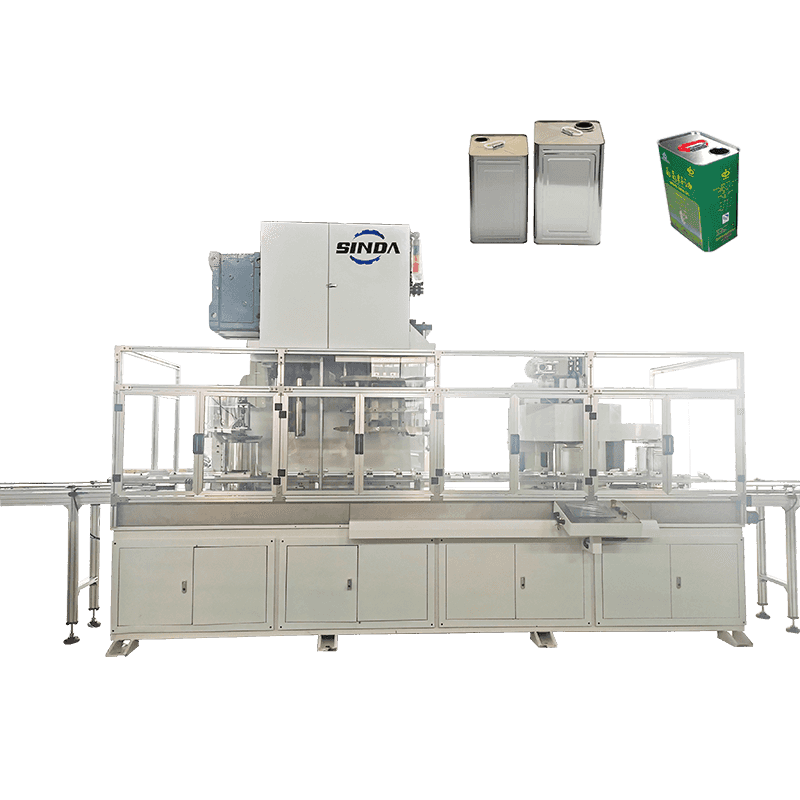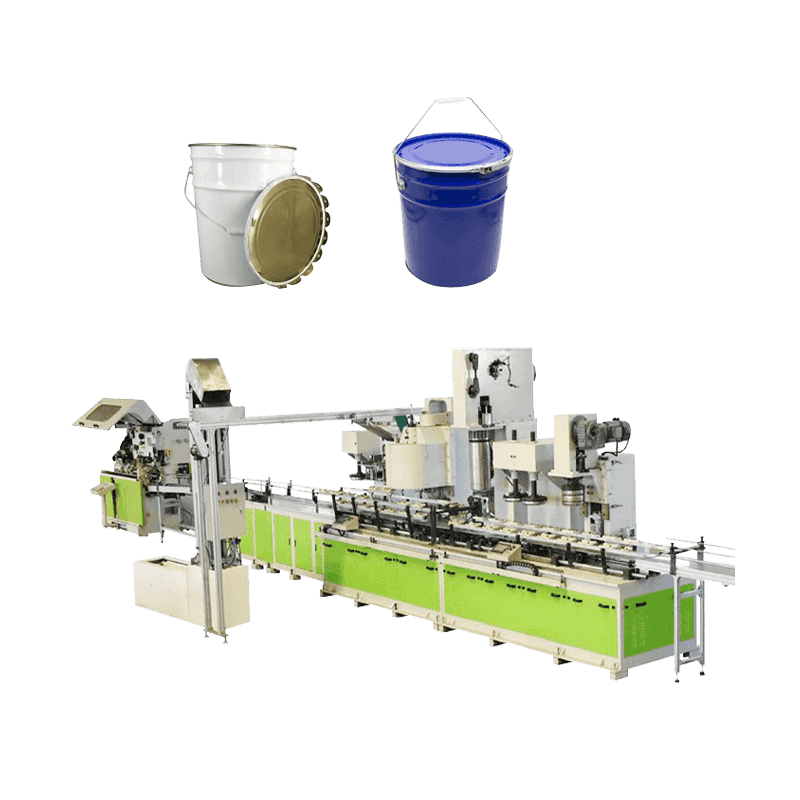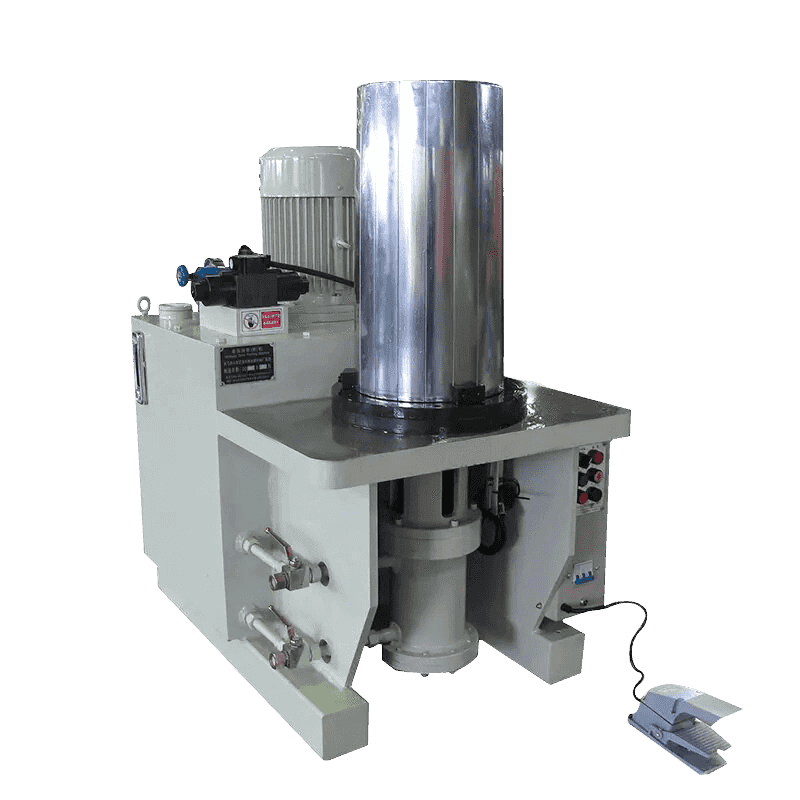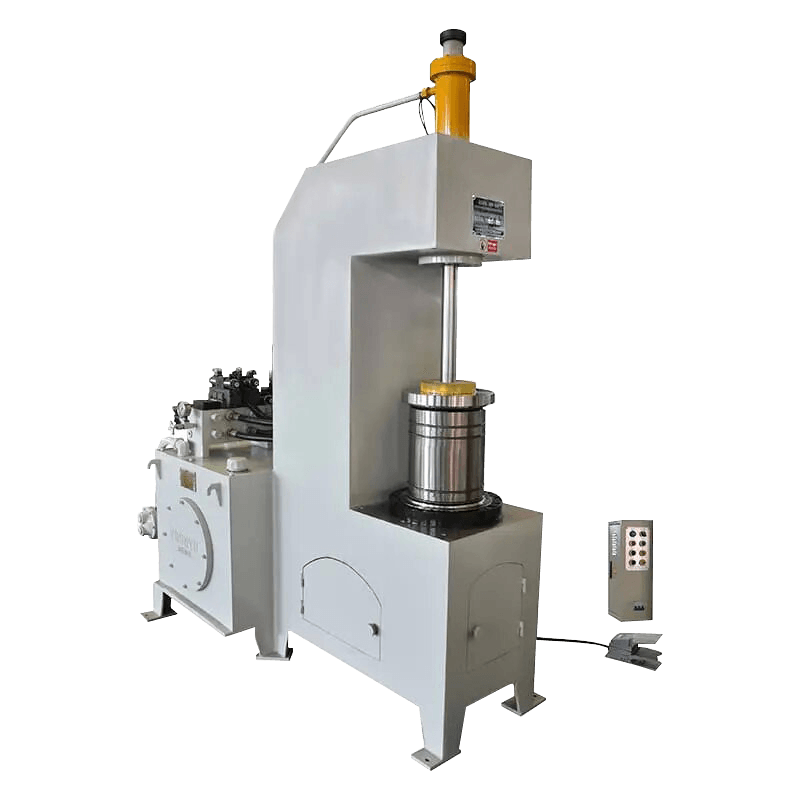Progressive transfer press installed 2 lanes of multi-station dies for cone forming, from big bubble making to edge curl before lining. Unique dynamic balance design and precise tooling processing ensure its high efficiency and stability.
Aerosol Tin Can Cone & Dome Production Line
Product Description
|
Model |
Pressure |
Strokes |
End size |
Stations |
|
GT2A-88A |
600 |
190 |
41-73 |
8-9 |
|
GT2A-88B |
800 |
160 |
41-65 |
8-9 |
|
GT2A-88C |
800 |
190 |
41-65 |
8-9 |
-
Does the twist-off lug cap production line have automatic feeding, sorting, and packaging functions?
Introduction to twist-off lug cap production lines Twist-off lug caps are widely used in the beverage and food industries to provide secure closures for bottles. The production of these caps requires ...
READ MORE -
What Are the Common Defects in Aerosol Tin Can Production and How Are They Prevented? Introduction to Aerosol Tin Can Production Aerosol tin cans are widely used for packaging products like sprays, pa...
READ MORE -
Introduction to Twist-Off Lug Cap Production Lines Twist-off lug caps are commonly used in various industries, particularly in the food and beverage sector, to seal jars, bottles, and containers. Thes...
READ MORE
1. How does the production line achieve automated production?
In the Aerosol Tin Can Cone & Dome Production Line, the degree of automation is one of the key competitive advantages in modern industrial production. This production line achieves a high degree of production efficiency and quality control by integrating advanced automation technology and equipment. The automation of the production line is reflected in the unmanned operation of multiple key processes. For example, from raw material feeding to can body molding, coating, printing and final packaging, each link is precisely automated and monitored. By using advanced machine vision systems and sensor technology, the production line can detect and adjust parameters in the production process in real time to ensure the accuracy and consistency of product dimensions.
The degree of automation of the production line is also reflected in the optimization and integration of its workflow. By adopting PLC (Programmable Logic Controller) and MES (Manufacturing Execution System), the production line can achieve accurate execution of production plans and real-time monitoring of production data. These systems not only improve production efficiency, but also greatly reduce the possibility of human errors and operational stoppages. For example, in the coating and printing processes, the automation system can automatically adjust according to the set procedures and recipes to ensure that the surface coating of each product is uniform and meets quality standards.
The production line also achieves efficient management of raw materials and finished products through intelligent logistics systems and automated warehousing solutions. The automated logistics system can ensure the timely supply of raw materials and the rapid shipment of finished products during the production process, thereby further improving the overall production efficiency and responsiveness.
Aerosol Tin Can Cone & Dome Production Line has achieved not only a significant improvement in production efficiency through the comprehensive application of automation technology, but also ensured the stability and consistency of product quality. This highly automated production mode not only adapts to the current market demand for high efficiency and fast delivery, but also lays a solid foundation for the future development of industrial production.
2. How does the production line ensure product quality and consistency?
In the operation of Aerosol Tin Can Cone & Dome Production Line, product quality and consistency are crucial key factors. To achieve this goal, the production line adopts a series of sophisticated quality control measures and technologies.
The production line has set up strict quality inspection points in each key process. For example, in the can body forming stage, advanced forming equipment and molds are used to ensure that the size and shape of each can body meet the specification requirements. At the same time, an automated visual inspection system is used to conduct online inspection of the can body surface to promptly detect and eliminate any surface defects or foreign matter.
Quality control in the coating and printing processes is particularly critical. The production line is equipped with high-precision coating equipment and printing machines, which can accurately control the thickness and uniformity of the coating to ensure that the appearance quality of each can meets customer requirements. By real-time monitoring of coating quality parameters such as gloss, adhesion and color consistency, the production line can quickly adjust process parameters to ensure product consistency and aesthetics.
The production line also implements a strict process control and continuous improvement plan. By regularly maintaining and calibrating production equipment and process flows, the stability of equipment and the accuracy of production parameters are ensured. At the same time, a close cooperative relationship is established with the supply chain and raw material suppliers to ensure that the quality of raw materials meets the requirements of product manufacturing, which fundamentally guarantees the stability of product quality.
Aerosol Tin Can Cone & Dome Production Line ensures product quality and consistency through strict quality control measures and technologies. This high-standard quality management system not only enhances the market competitiveness of products, but also provides customers with reliable product guarantees.
3. How does the production line meet the requirements of environmental protection and sustainable development?
In the context of today's society's increasing attention to environmental protection and sustainable development, Aerosol Tin Can Cone & Dome Production Line is committed to minimizing the impact on the environment during the production process and adopting sustainable production practices.
The production line follows environmental protection principles in the selection and utilization of raw materials. The metal materials and coatings used are in compliance with environmental protection standards. By reducing or completely eliminating the use of toxic or hazardous substances, the impact of the product on the environment and human health during use and disposal is minimized.
The production line achieves effective resource utilization and reduced energy consumption by optimizing process flow and energy utilization efficiency. For example, energy-efficient production equipment and process control systems are used to reduce energy waste and carbon dioxide emissions. At the same time, by implementing recycling water utilization and wastewater treatment technologies, water resource consumption and environmental emissions during production are minimized.
The production line also focuses on environmentally friendly design and recyclability of product packaging. Environmentally friendly packaging materials are used, and packaging design is optimized to reduce the generation of packaging waste, while encouraging customers and consumers to participate in the cycle of waste recycling and resource reuse.
The production line actively participates in the construction of social responsibility and environmental management systems. By obtaining environmental management certification and certification of relevant standards, such as ISO 14001, the production line ensures that its environmental policies and practices are consistent with international standards and best practices, and continuously improves environmental performance and sustainable development capabilities.

 English
English عربى
عربى русский
русский
